
All categories
Featured selections
Trade Assurance
Buyer Central
Help Center
Get the app
Become a supplier

(2490 products available)
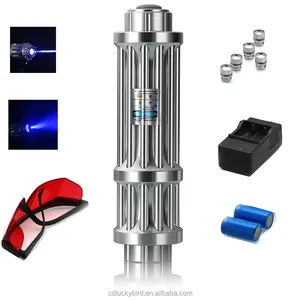
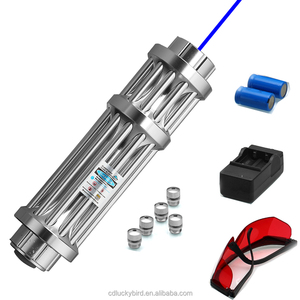
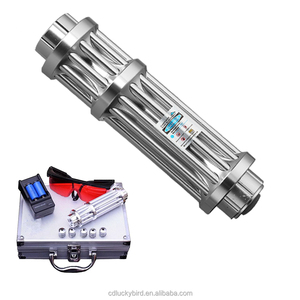

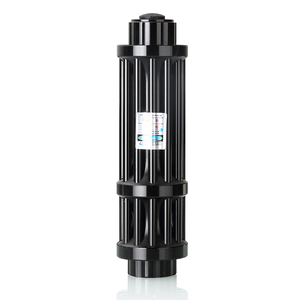























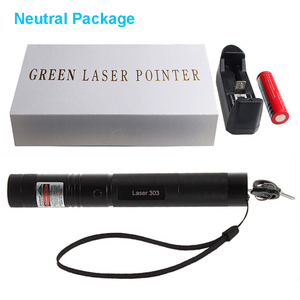













There are a number of different types of laser pointers beam available. They can be broadly categorized based on the color of the laser pointer beam, laser pointer functionality, and power.
Green Beam Laser Pointers:
The human eye can see green light from a laser pointer very clearly. Beam laser pointers in this Green color are visible from a great distance, sometimes up to more than a mile away. Precise pointing with a green laser beam is easy to do. Some people consider green laser pointers to be the most powerful. However, it is not true that green lasers are the most powerful. High power is not the same as high visibility. The visibility and brightness of a laser pointer will depend on several things like environmental conditions and the wavelength of the laser beam.
Red Beam Laser Pointers:
Most people buy red laser beam pointers because they are inexpensive. The cost of making red lasers is lower when compared to green, blue, or purple beam laser pointers. Red pointers are easily affordable and are available in a number of different models.
Blue Laser Pointers:
Blue laser pointers are not as commonly seen as red or green laser beams. Users will find blue pointers difficult to see in lighting conditions that are bright. However, in extremely dark areas, the blue laser pointer beam is very easy to see. The color blue is highly visible to the human eye. However, these laser pointers are not suitable for use in a work setting because the blue light can cause some eye problems.
Purple Laser Pointers:
Purple laser beam pointers are not commonly used. Some users find that the purple pointer beams/pulses are difficult to see clearly compared to red or green lasers.
A beam laser pointer has different features depending on its type. Here are some common ones:
Color
Lazers can be red, green, or any other rainbow color. The hue depends on the wavelength; shorter wavelengths have more visible colors than longer ones. Lasers with longer wavelengths like IR and UV pointers are invisible to the naked eye. However, the laser may have a visible beam due to particles in the air scattering light. The color of the laser can create an aesthetic appeal in the environment or help differentiate between lasers for various uses. For example, military-grade laser pointers are often blue because they are more powerful and visible.
Wattage :
The laser pointer beam's brightness and visibility depend on wattage. Higher watts lasers are brighter, more dangerous, and costlier than lower wattage ones. Lasers over 5mW can cause permanent eye damage, while those above 500mW can burn skin or lighter flammable materials.
Laser Class:
Laser pointers have different classes ranging from one to four, depending on eye safety standards. Class 1 lasers are the least dangerous, while class 4 pointers can injure people or cause harm to property. Beam laser pointers are usually classified between 2 and 3.
Beam Diameter and Divergence:
The beam's diameter refers to its thickness. Beam divergence describes how much the laser beam spreads over a distance. Lasers with a small beam diameter and low divergence produce a thin and sharp beam over long distances. This makes the laser pointer accurate and easy to use. A good quality laser pointer will have a precise and consistent beam.
Focus and Interchangeable Lenses :
Some laser pointers have a fixed focus, while others have a collapsible lens that can magnify images. Laser pointers with a fixed focus give a well-defined dot or beam over a certain distance. Pointers with multiple focuses create different sized beams.
Multi-Purpose Tool:
Some laser pointers come with added utilities like a flashlight. This increases the device's functionality and makes it convenient to carry.
Rechargeable Battery:
Lasers run on alkaline or lithium batteries. When buying a laser pointer, it is important to choose one with rechargeable batteries, as they offer lower long-term costs. Pointer lasers also need charging after a short time. Recharging batteries is a more eco-friendly option than using disposable ones.
Waterproof:
Some laser pointers are designed for indoor use only. However, pointers used in construction and surveying applications need to be resistant to dust and liquids. Lasers with an IP rating of 64 to 45 are protected against water and dust.
There are many industries where laser beam pointers are used in a wide range of applications. These tools are beneficial in all use cases because of their visibility and precision.
Medical Applications
Laser pointers are used in dermatology, cosmetic surgery, and other medical specialties to highlight lesions, moles, or areas of concern on the skin with laser pens. Beam laser pointers can also be used to assist with precise incisions during surgery or other interventions. Physicians can indicate specific body areas for further examination or imaging with the aid of a pulsing or varying-intensity pointer. Dental professionals may use laser pens to point out specific teeth or areas during exams or procedures.
Architecture and Construction
Architects or designers may use a laser pointer pen to highlight design features, materials, or places of interest throughout a presentation or walkthrough. When giving talks or presentations on building projects, beam laser pointers may be used to draw attention to plans, elevations, or specific aspects of the structure. In construction inspections or assessments, inspectors may use them to point out problem areas, code violations, or places requiring more examination. This can aid in ensuring clear communication and understanding of essential locations.
Astronomy
Laser pointers are frequently used to teach astronomy, where educators or guides may use them to indicate particular stars, constellations, planets, or other heavenly bodies. They can also be employed to highlight particular locations in the night sky during star-viewing events. When using planetarium shows, laser pointers can be used to replicate the appearance of certain celestial objects or to provide information about them. In stargazing competitions or activities, individuals can employ powerful laser pointers to make bright beams that others can see and direct their attention toward specific parts of the sky.
Military and defence
Beam laser pointers can be used in various military and defence operations, training exercises, and strategy discussions. They aid communication, planning, and targeting in the field. Personnel can use laser pointers to direct air support, artillery, or other assets to specific targets or locations with precision. Additionally, engineers and others can use laser pointers to point out critical features of military vehicles, weapons systems, or other equipment during inspections, maintenance, or training.
When choosing a beam laser pointer for sale, there are many important factors buyers need to consider. Buyers should select a reliable supplier and verify the legal regulations for laser pointers in their region before purchasing in bulk. Here are some important things to keep in mind when buying laser pointers:
Color of the Laser Beam
In most cases, the laser beam pointer color results from the laser diode. However, different colors are more visible in different lighting conditions. For example, red and green pointers can be difficult to see in daylight. Choosing a 1mW or 5mW laser pointer with a color that contrasts with the background is best. Note that people can see green beams up to 32 miles (or 120 seconds of arc) and red beams up to 20 miles (or 70 seconds of arc). For this reason, tip laser pointers with green beams are more expensive than those with red beams.
Wattage
The laser pointer's power, expressed in milliwatts (mW), defines its visibility, intensity, and range. A 1mW or 5mW laser pointer is sufficient for most common uses. Higher-wattage pointers are more dangerous and have stricter regulations, so users should handle them with care. Higher wattage also means higher prices.
Size and Weight
The size and weight of a laser pointer influence how comfortable users feel when using them. Longer and heavier pointers are not so easy to handle. User-friendliness is an essential factor in customer satisfaction. To help achieve a good balance, buyers should look for beam pointers with a small size and lightweight design.
Battery Life
Every beam laser pointer uses batteries to function. Users can get frustrated if a pointer's batteries run out in the middle of a crucial presentation or lecture. So, buyers should consider battery life and try to choose pointers that last longer on a single battery charge. Also, the kind of batteries used in a laser pointer can affect battery life. Non-rechargeable alkaline batteries are different from lithium batteries and rechargeable NiMH or Li-ion batteries. Offering laser pointers with different battery types can help meet varying customer needs.
Durability
Durability is an important factor to consider. The impact-resistant and weatherproof beam pointers are more likely to satisfy and attract customers. Buyers looking for durable pointers should go for those made with metal casings. Metal is stronger and lasts longer than plastic laser pointers.
Q1. What is the best beam laser pointer?
A1. Different wavelengths or colors of laser beams are better for various applications. For example, the green beam laser pointer is better for indoor use because it is bright and visible, while the red is good for long-range shooting. The blue laser pointer can be used for high power because it is dangerous to the eyes.
Q2. What are some business applications for laser pointers?
A2. Conference laser pointers are used in business presentations to highlight important information on slides. Classroom laser pointers help teachers give precise answers to students during lessons. Inspection laser pointers allow users to measure temperature and distance in a large area. Architects and builders use them during design and construction.
Q3. How many mW will it burn?
A3. 1mW–5mW lasers can't start a fire because they are safe for the eyes. Lasers that have a power level of 20mW or higher can cause a fire. 20mW lasers and higher can burn paper or matchsticks from a very short distance.
Q4. Is higher mW laser pointer better?
A4. Not really. More mW means the laser is brighter, but mW levels above 5mW are dangerous to the eyes. 1mW to 5mW pointers are safe for the eyes. 1mW to 5mW are good for showing presentations, but people will not see the beam at night. Lasers with 5mW to 20mW are visible at night but may give someone a headache. M 20mW and higher can cause permanent eye damage.
Q5. How long should laser pointers last?
A5. A good laser pointer can last many years with good care. Replace the batteries when they run out. Also, keep the pointer in a dry place. Avoid dropping it or exposing it to very hot or cold temperatures.